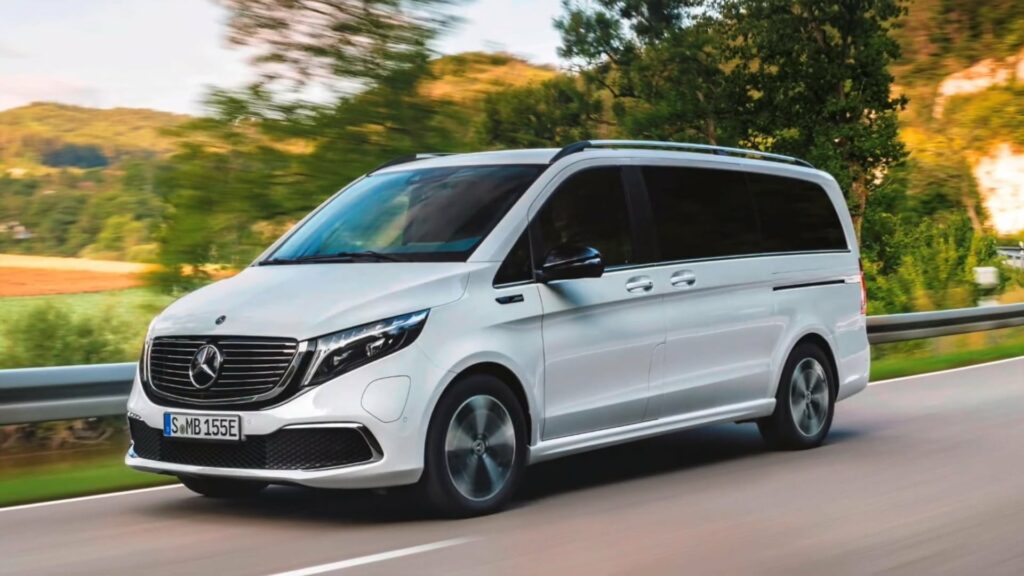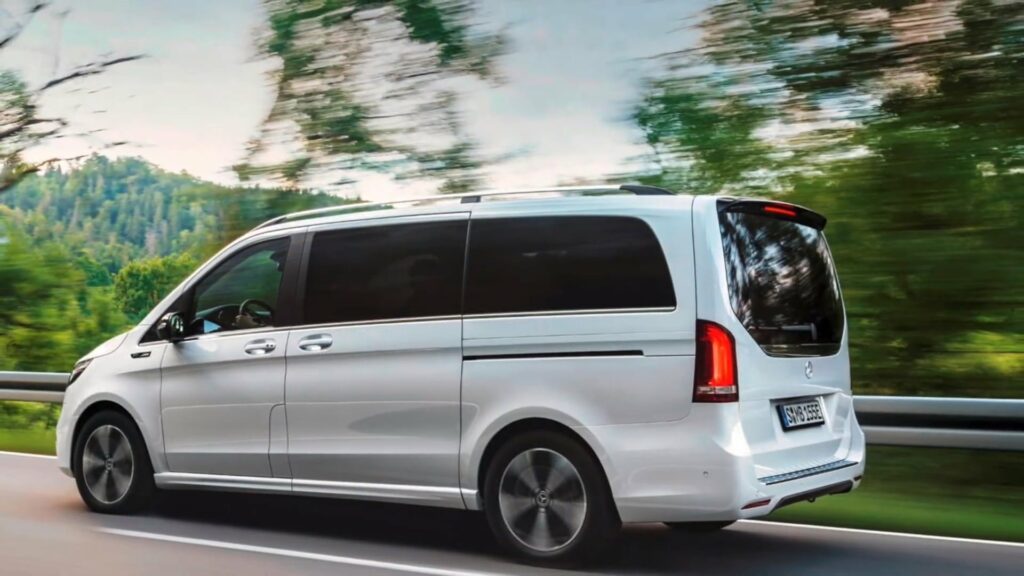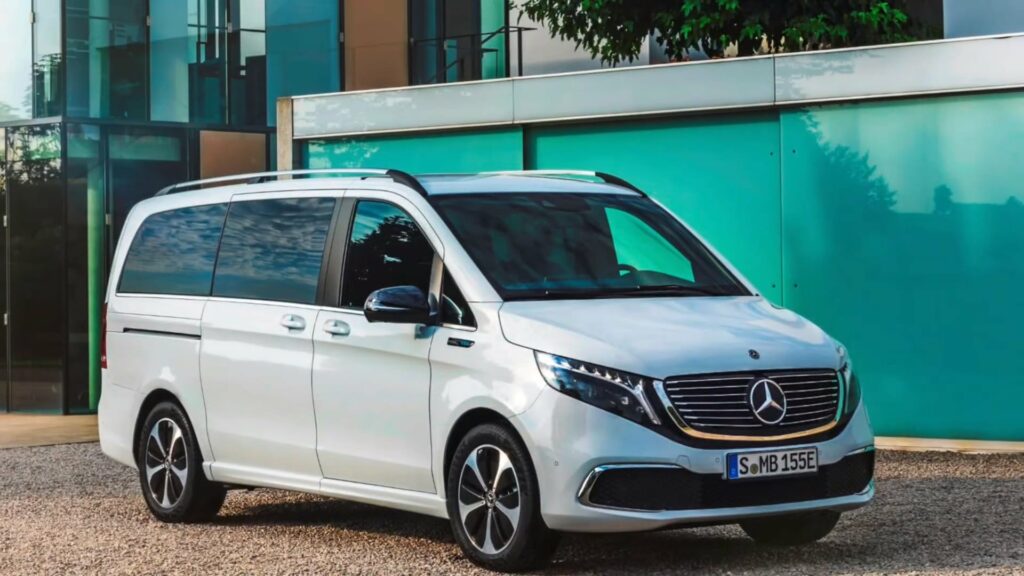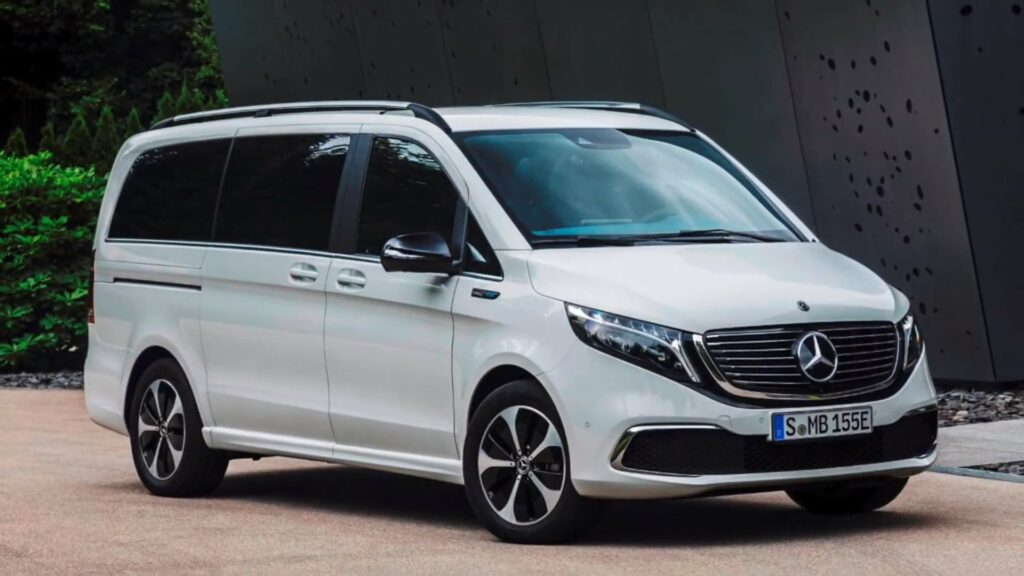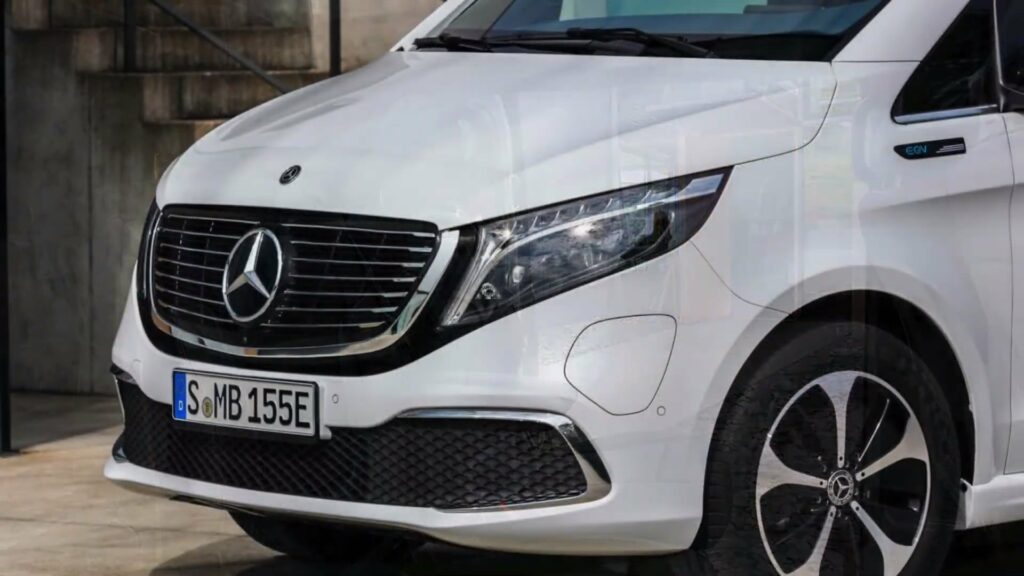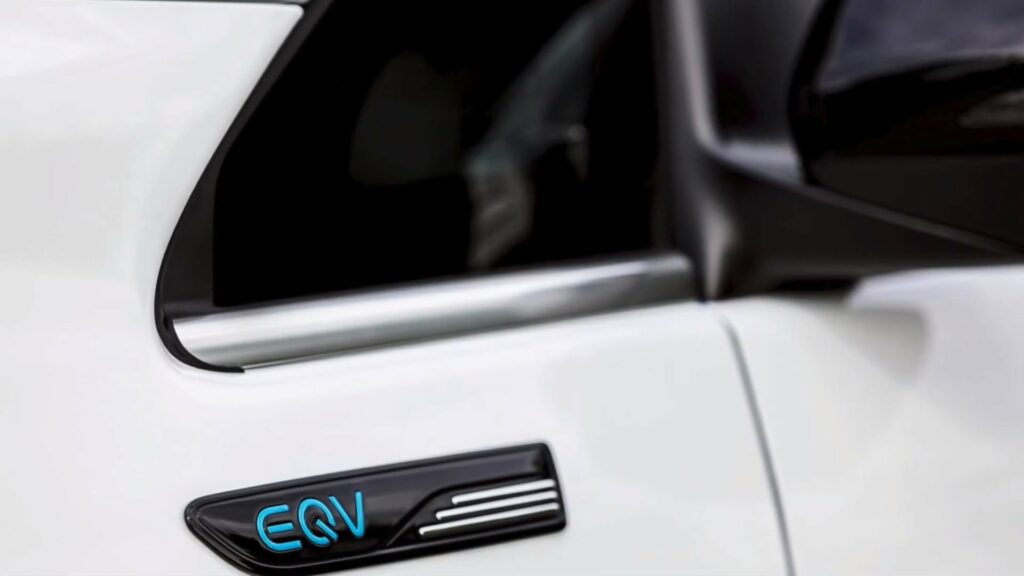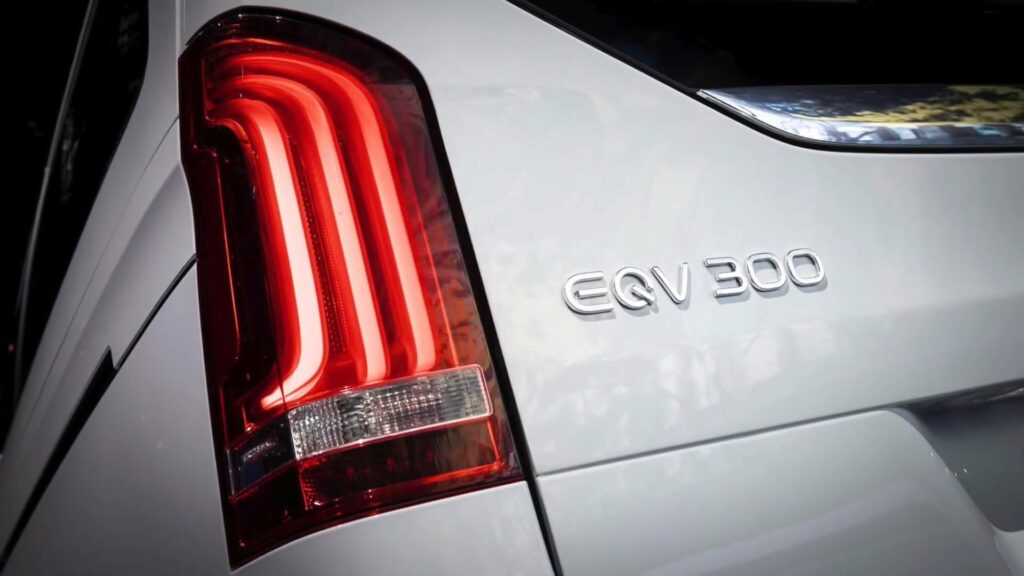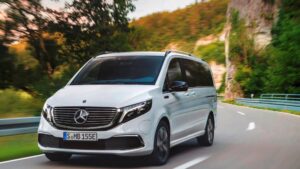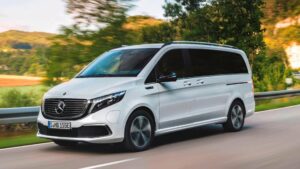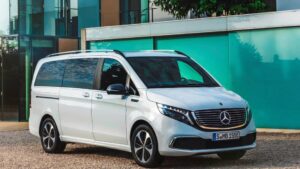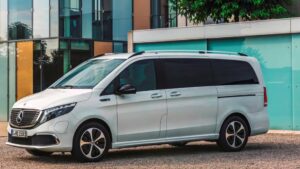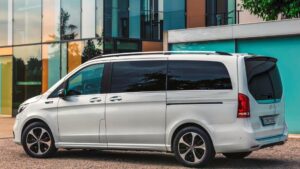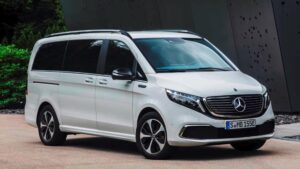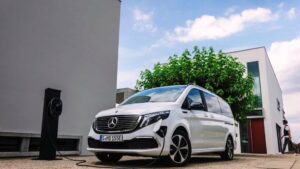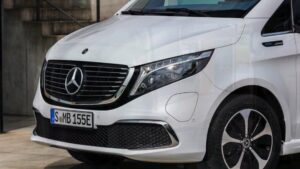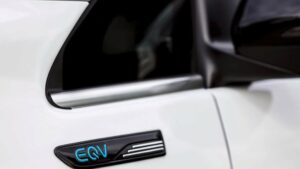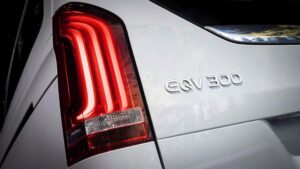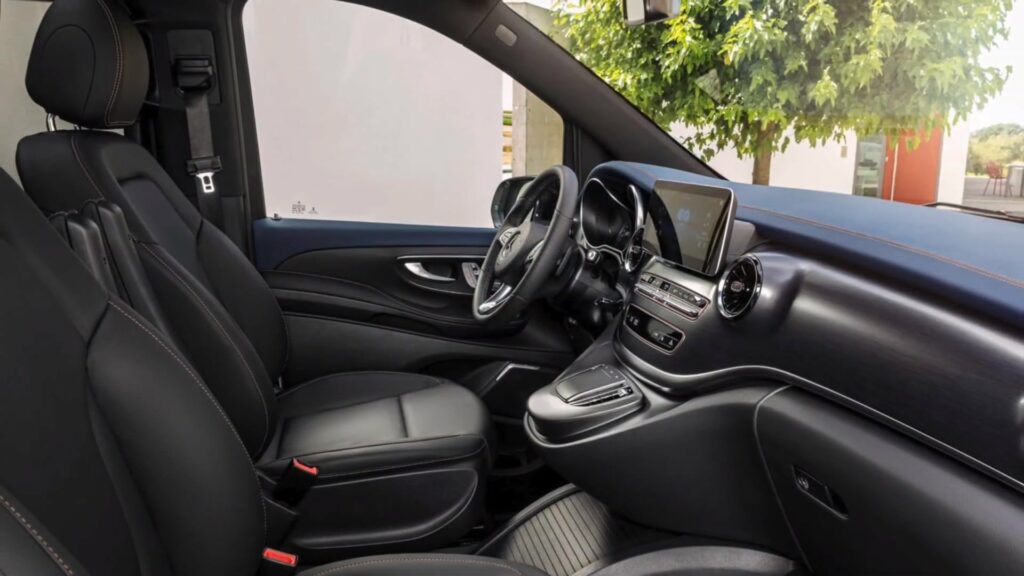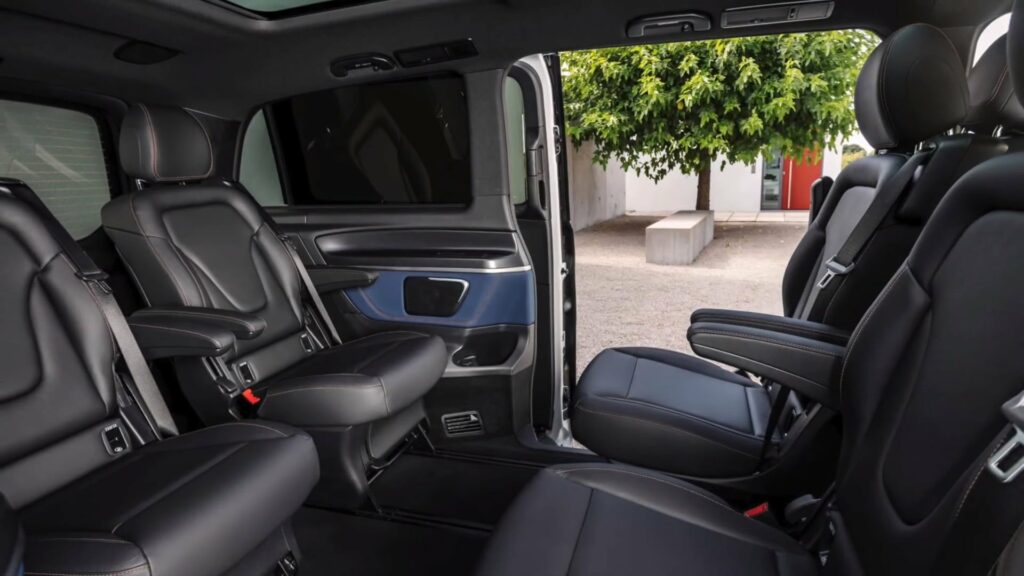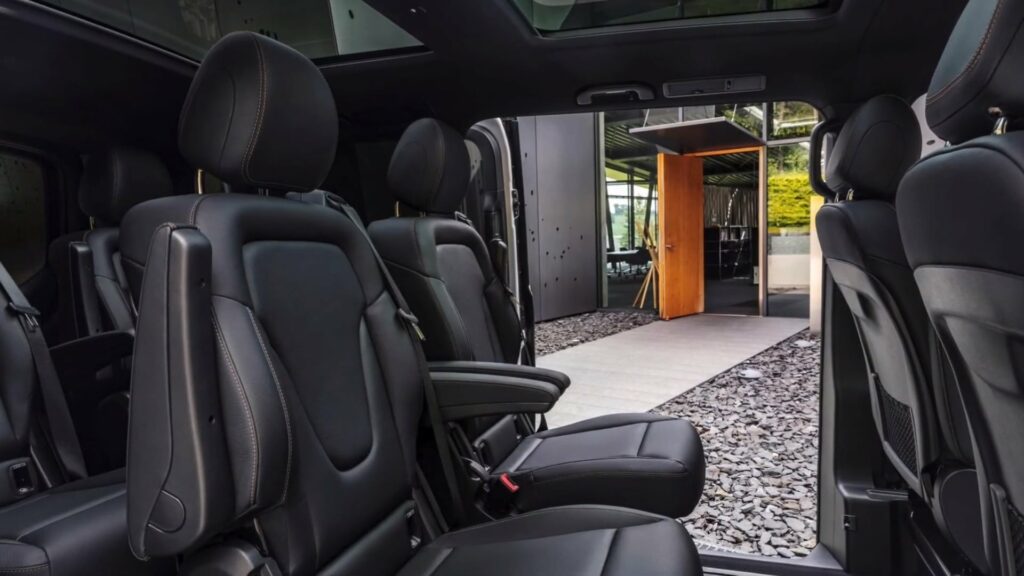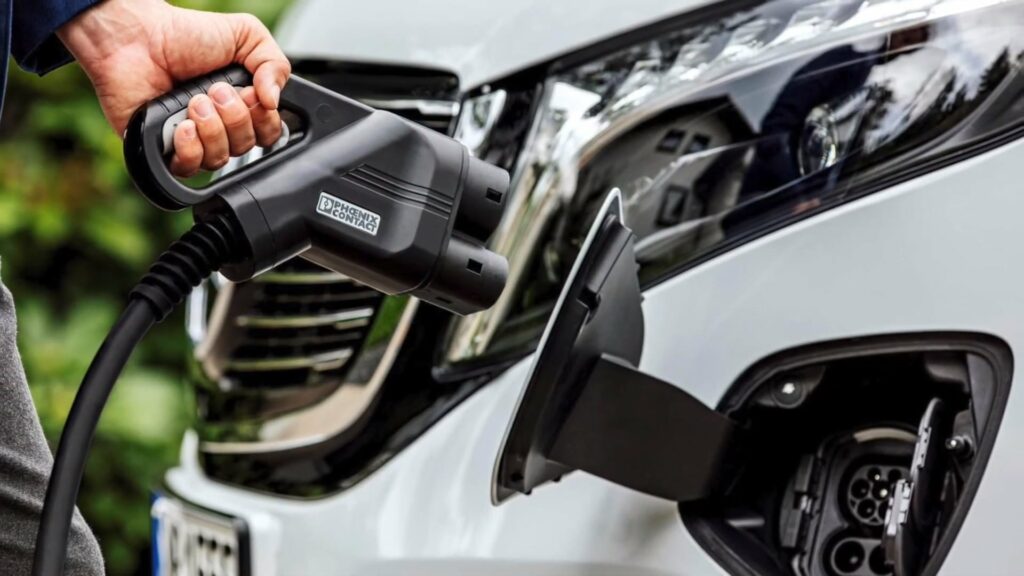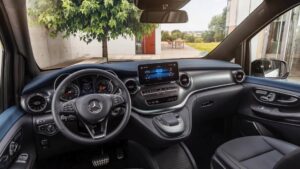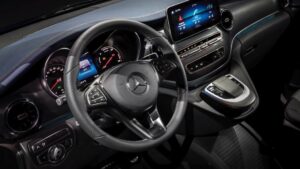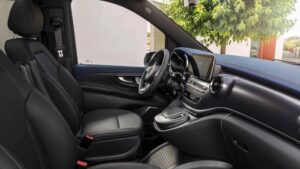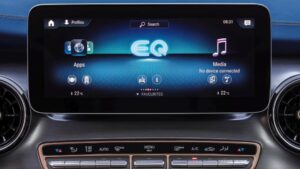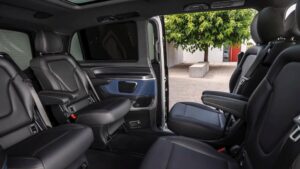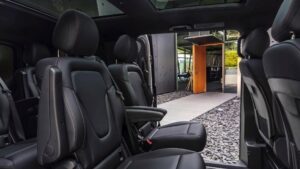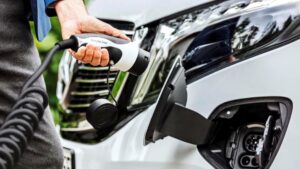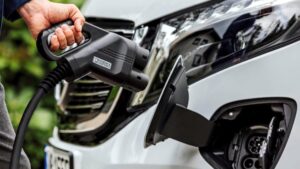Mercedes EQV 300 Extra-Long
The Mercedes-Benz EQV is a premium all-electric passenger van that offers the familiar functionality of a V-class minivan but is based on a completely environmentally friendly drivetrain.
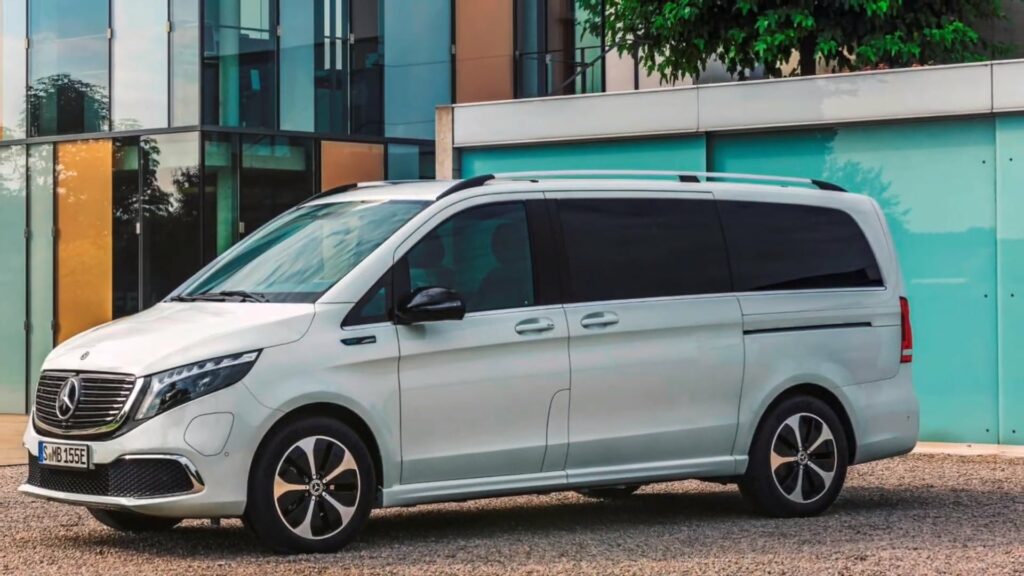
The Mercedes-Benz EQV is equipped with a 150 kW front-drive compact electric transmission (eATS), in which the electric motor, fixed-ratio transmission, cooling system, and power electronics form a compact and integral unit. The top speed of the propulsion system is 160 km/h.
The Mercedes-Benz EQV is equipped with a 100 kW⋅h lithium-ion battery pack (limited to a usable capacity of 90 kW⋅h), which provides a range of 400 km on the WLTP cycle. The battery is installed on the floor of the van, which has a positive effect on its stability and driving characteristics.
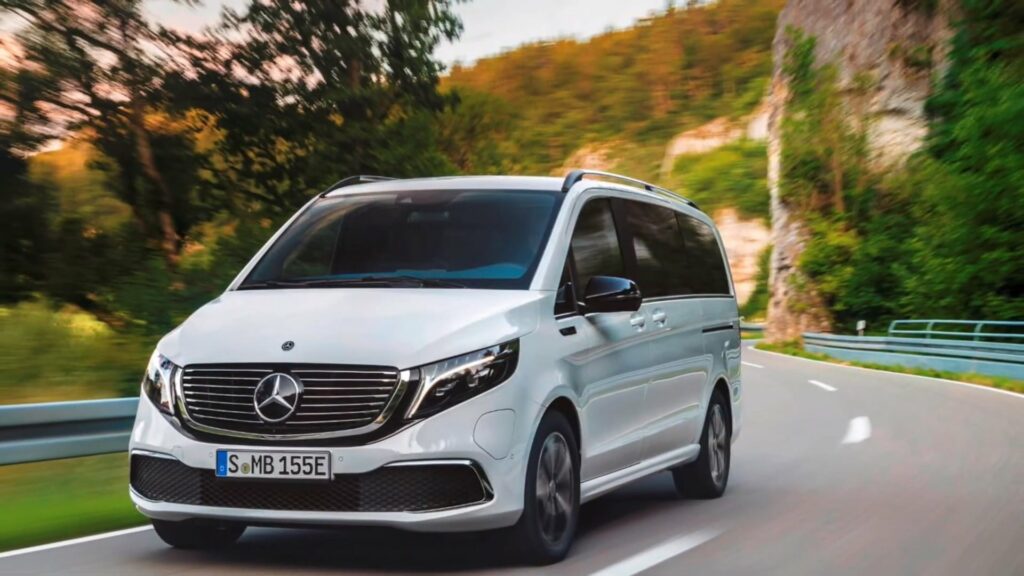
An 11 kW water-cooled AC onboard charger is responsible for charging the electric van. In addition to this, the electric vehicle is available with CCS Combo 2 fast constant current charging, with which the vehicle can be charged from 10 to 80 percent of the battery capacity in less than 45 minutes at a maximum output of 110 kW.
The charging port of the Mercedes-Benz EQV is located on the left side of the front bumper.
The electric van is a classic Mercedes-Benz V-Class passenger van, but with exclusive elements inherent in the EQ family. In particular, the identity of the electric series Mercedes-Benz can be identified by the original black grille with chrome ribs, as well as characteristic only for this model 18-inch wheels with a special wheel pattern, further emphasizing the dynamic image.
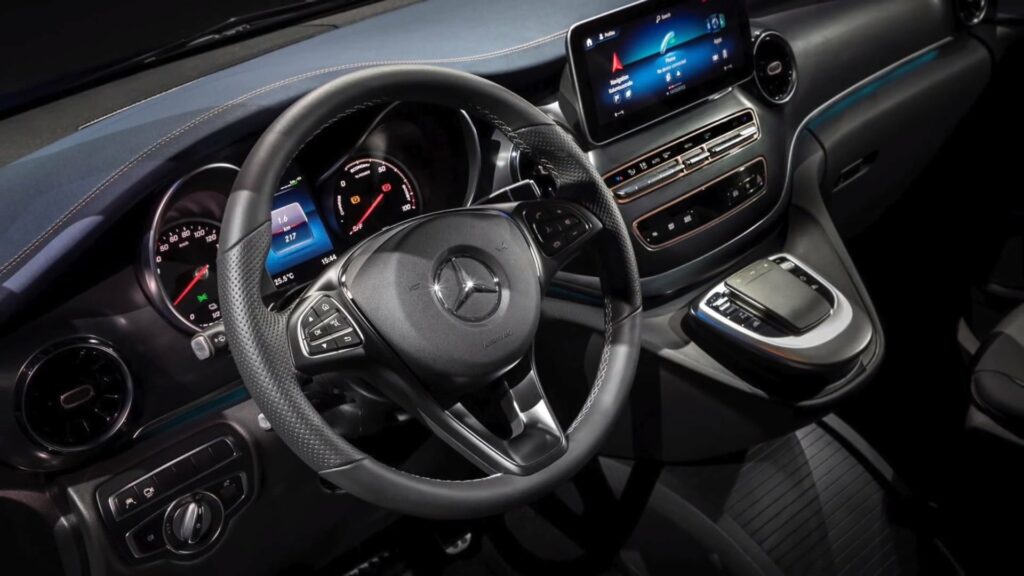
The electric car’s exterior aesthetic is also evident in the interior, where the emphasis is on simple and intuitive controls. The interior features many shades of blue to symbolize electromobility, in particular the surface of the dashboard, door cards, and seat backs are finished in blue leather. In addition, the seats are stitched with blue stitching, and there is blue LED lighting all around the dashboard.
The whole image of the EQV’s interior is recognizable and has a lot in common with the fuel vans in this series. The build quality, attention to detail, and ergonomics, are all at the highest level and provide the utmost comfort for both the driver and all passengers. Special attention should be paid to the interior layout, which offers several options for the arrangement of the seats, from the basic 6-seat set-up to the transformation of the EQV into an 8-seater minibus.
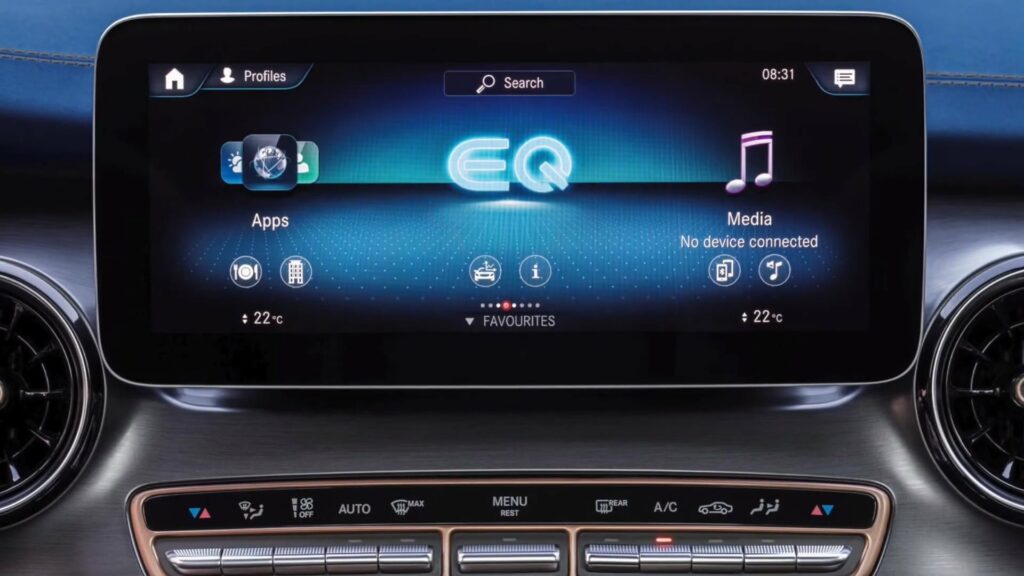
The basis of human-electric vehicle interaction is taken over by the MBUX (Mercedes-Benz User Experience) infotainment system, which combines a voice control system with innovative connectivity features.
The main controls for the electric vehicle are concentrated on the 10-inch display of the multimedia system.
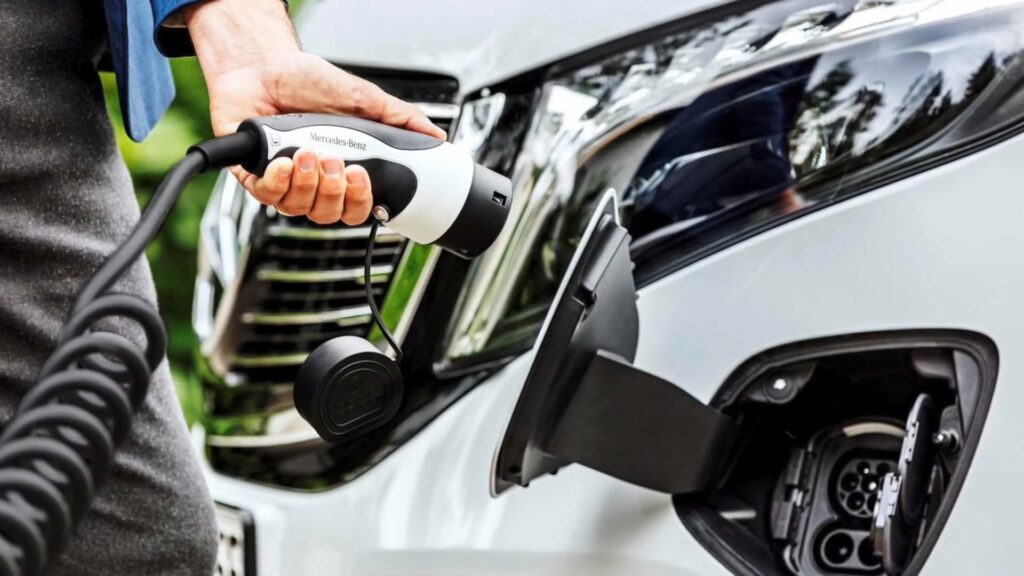
With the Mercedes me app, the EQV electric van can be controlled remotely, adjusting the temperature in the cabin, forming a future route, and controlling the charging of the electric vehicle.
| Performance | |
| Acceleration 0 – 100 km/h | 12.1 sec |
| Top Speed | 160 km/h |
| Electric Range | 320 km |
| Total Power | 150 kW (204 PS) |
| Total Torque | 362 Nm |
| Drive | Front |
| Battery and Charging | |
| Battery Capacity | 100.0 kWh |
| Battery Useable | 90.0 kWh |
| Europe | |
| Charge Port | Type 2 |
| Port Location | Left Side – Front |
| Charge Power | 11 kW AC |
| Charge Time (0->320 km) | 9h45m |
| Charge Speed | 33 km/h |
| Fastcharge Port | CCS |
| FC Port Location | Left Side – Front |
| Fastcharge Power (max) | 110 kW DC |
| Fastcharge Time (32->256 km) | 47 min |
| Fastcharge Speed | 280 km/h |
| Energy Consumption | |
| EVDB Real Range | |
| Range | 320 km |
| Vehicle Consumption | 281 Wh/km |
| CO2 Emissions | 0 g/km |
| Vehicle Fuel Equivalent | 3.2 l/100km |
| NEDC Ratings | |
| Range | 417 km |
| Rated Consumption | 264 Wh/km |
| Vehicle Consumption | 216 Wh/km |
| CO2 Emissions | 0 g/km |
| Rated Fuel Equivalent | 3.0 l/100km |
| Vehicle Fuel Equivalent | 2.4 l/100km |
| WLTP Ratings | |
| Range | 362 km |
| Rated Consumption | 280 Wh/km |
| Vehicle Consumption | 249 Wh/km |
| CO2 Emissions | 0 g/km |
| Rated Fuel Equivalent | 3.1 l/100km |
| Vehicle Fuel Equivalent | 2.8 l/100km |
|
Rated = official figures as published by manufacturer. Rated consumption and fuel equivalency figures include charging losses.
|
|
|
Vehicle = calculated battery energy consumption used by the vehicle for propulsion and on-board systems.
|
|
| Real Energy Consumption between 194 – 400 Wh/km | |
| City – Cold Weather | 265 Wh/km |
| Highway – Cold Weather | 400 Wh/km |
| Combined – Cold Weather | 327 Wh/km |
| City – Mild Weather | 194 Wh/km |
| Highway – Mild Weather | 321 Wh/km |
| Combined – Mild Weather | 254 Wh/km |
|
Energy use for each trip will vary considerably depending on the driver and the conditions. Therefore, we have provided a range of estimates which can be useful in developing an understanding of the potential benefits of this technology. |
|
| Dimensions and Weight | |
| Length | 5370 mm |
| Width | 1928 mm |
| Width with mirrors | 2244 mm |
| Height | 1901 mm |
| Wheelbase | 3430 mm |
| Weight Unladen (EU) | 2660 kg |
| Gross Vehicle Weight (GVWR) | 3500 kg |
| Max. Payload | 915 kg |
| Cargo Volume | 1410 L |
| Cargo Volume Max | 5010 L |
| Cargo Volume Frunk | No Data |
| Roof Load | No Data |
| Tow Hitch Possible | No Data |
| Towing Weight Unbraked | No Data |
| Towing Weight Braked | No Data |
| Vertical Load Max | No Data |
| Miscellaneous | |
| Seats | 7 people |
| Isofix | No Data |
| Turning Circle | No Data |
| Platform | No Data |
| Car Body | Small Passenger Van |
| Segment | N – Commercial |
| Roof Rails | Yes |
| EV Dedicated Platform | No Data |
Home and Destination Charging (0 -> 100%)
A public charging station is required to use the highest possible charging rate. The EVSE/charging station’s charging capacity affects how long it takes to fully charge the battery. The table below shows all possible options for fully charging the Mercedes EQV 300 Extra-Long.
In Europe, plugging an electric car into an outlet is often as easy as plugging it into a household outlet, but there are differences from country to country. The table below shows the different ways to charge the Mercedes EQV 300 Extra-Long, but in some countries some chargers may not be available.
Type 2 ( IEC 62196)

| Charging Point | Max. Power | Power | Time | Rate |
| Wall Plug (2.3 kW) | 230V / 1x10A | 2.3 kW | 46h15m | 7 km/h |
| 1-phase 16A (3.7 kW) | 230V / 1x16A | 3.7 kW | 28h45m | 11 km/h |
| 1-phase 32A (7.4 kW) | 230V / 1x32A | 7.4 kW | 14h30m | 22 km/h |
| 3-phase 16A (11 kW) | 400V / 3x16A | 11 kW | 9h45m | 33 km/h |
| 3-phase 32A (22 kW) | 400V / 3x16A | 11 kW | 9h45m | 33 km/h |
Fast Charging (10 -> 80%)
If you want to enjoy driving an electric car, one of the most important features to consider is the number of miles per hour the car can travel while charged. This is called the “range” of the car. All electric cars have a certain range, even if they are 100% charged. This is because they do not have an internal combustion engine to lean on if you need to drive a long distance.
Max. Power: The maximum power provided by the charging point
Avg. Power: The average power provided by the charging point during a session of 10% to 80%.
Time: the time it takes to charge from 10% to 80%
Speed: the average charging rate during the session of 10% to 80%
Combined Charging System (CCS Combo 2)
| Charging Point | Max. Power | Avg. Power | Time | Rate |
| CCS (50 kW DC) | 50 kW | 40 kW | 99 min | 130 km/h |
| CCS (100 kW DC) | 100 kW | 75 kW | 53 min | 250 km/h |
| CCS (150 kW DC) | 110 kW | 85 kW | 47 min | 280 km/h |
| Brand | Mercedes |
| Model | EQV 300 Extra-Long |
| Body Style | Small Passenger Van |
| Car Engine | electric |
| Motor power | 150 |
| Maximum Torque, Nm | 362 |
| Battery Energy, kWh | 100.0 |
| Power reserve (NEDC/EPA/WLTP), km | - / - / 320 |
| Level Charging (230/400/DC), hours | - / 9.45 / 0.47 |
| Electrical Acceleration, 0-100 km/h (0-62.1 mph) in sec | 12.1 |
| Top Speed, km/h | 160 |
